Spring and summer do not last forever. That season in which you have to wear thicker coats, gloves, and beanies will always come.
As we experience the chilling cold of winter, chickens do too. But you will find that some chicken breeds suffer the adversities of the falling temperatures in winter more than others.
If you are a poultry farmer or a chicken owner living in a temperate region, you will benefit from having cold-hardy chickens around. However, if you are unsure of which breeds to opt for, read this article.
Herein we explore some of the chicken breeds that do well in cold weather.
Table of Contents
1. Ameraucana
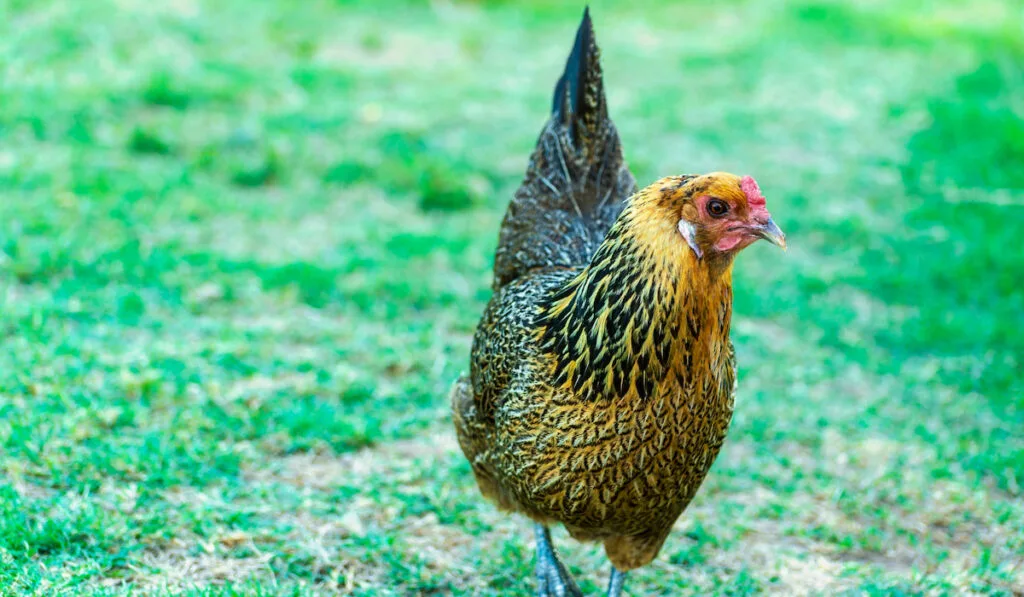
Ameraucanas come with pea-sized combs and tiny wattles.
So, it is understandable how they can withstand cold to a great extent. Plus, the tininess of their comb and wattle leaves them at low risk of frostbite.
Besides being cold-hardy, one reason you may fancy these birds is their uniquely colored eggs. Ameraucanas produce medium-sized blue eggs at a rate of 3-4 per week. In a year, you can expect up to 200 eggs, which is pretty decent.
One more thing: if you give them enough light and feed, they will lay eggs in colder seasons.
2. Australorp
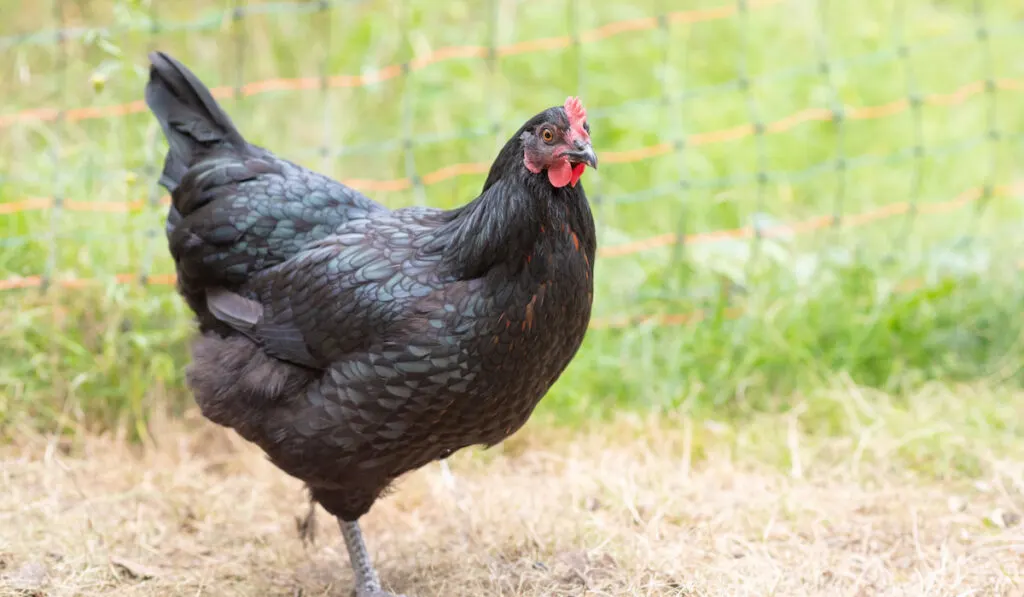
Australorps were bred from hybridization between Black Orpingtons and some other chicken breeds. They originated in Australia, hence the Austral- in the breed name.
While Australorps were invented in Australia, they actually thrive in colder climates. Their ability to withstand low temperatures is driven by their dense, fluffy plumage.
Beyond their resistance to cold, Australorps give you a whole lot of eggs. They lay medium-sized light brown eggs at a rate of 4-5 per week.
So you can get as many as 250 eggs per chicken in a year. The egg-laying ability of this breed is one of the best. In fact, an Australorp holds the record for most eggs in a year (364).
On laying eggs in winter: some strains lay egg through winter, while other do not. You may confirm this from the breeder before you buy yours.
3. Barnevelder
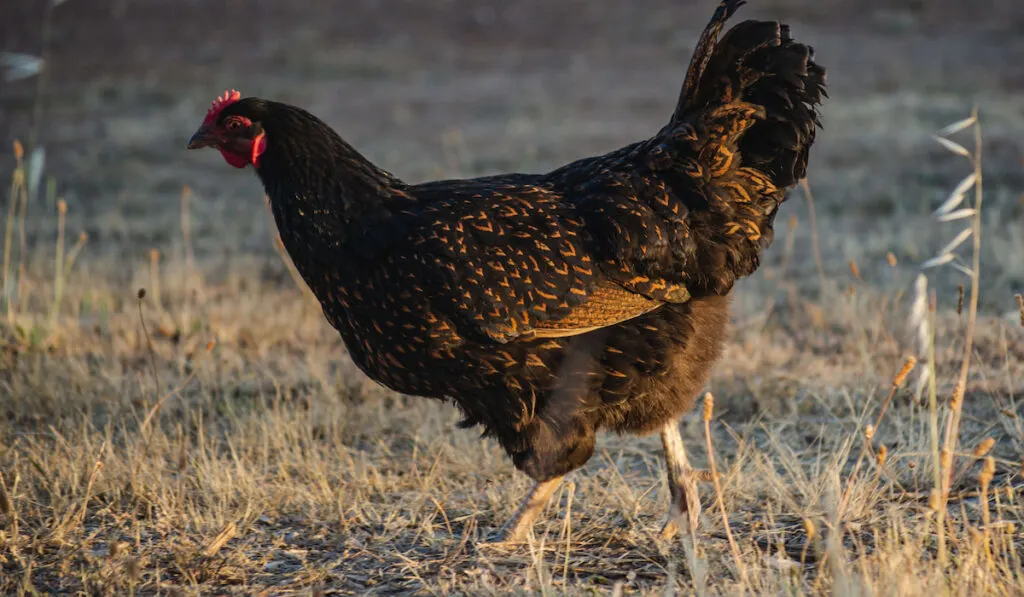
The Barnevelder breed was bred for hardiness at low temperatures. You will find that it also tolerates higher heat, but not as well.
Barnevelder chickens owe their tolerance to cold to their thick feathers.
But while they have a certain degree of cold-hardiness, they are still prone to frostbite. Their combs leave them open to suffering frostbite.
If you want a chicken that can lay eggs in winter, then try a Barnevelder. Some hens of this breed have been recorded to lay eggs well into the winter.
Barnevelders lay brown eggs that could be medium-sized or large. On average, they produce 3-4 eggs per week. So, a year’s total is typically around 150-200 eggs.
4. Brahma
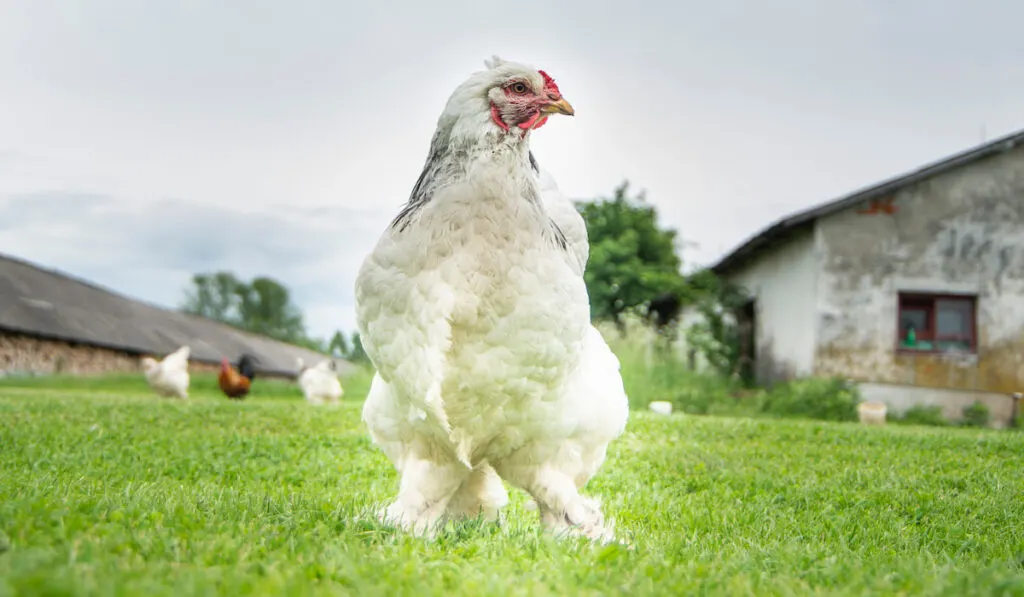
With feathers almost everywhere on the body of Brahma chickens, it is no surprise they are cold-hardy.
Besides having feathers on their body and feet, they have tiny combs. Consequently, they are insulated and less prone to frostbite.
Brahma chickens are available in three recognized colors: buff, dark, and light.
They are one breed that lays eggs through the winter, and they offer a decent productivity rate. On average, they produce 3 to 4 eggs in a week (150-200 in a year). Their eggs are brown and usually medium-sized.
5. Buckeye
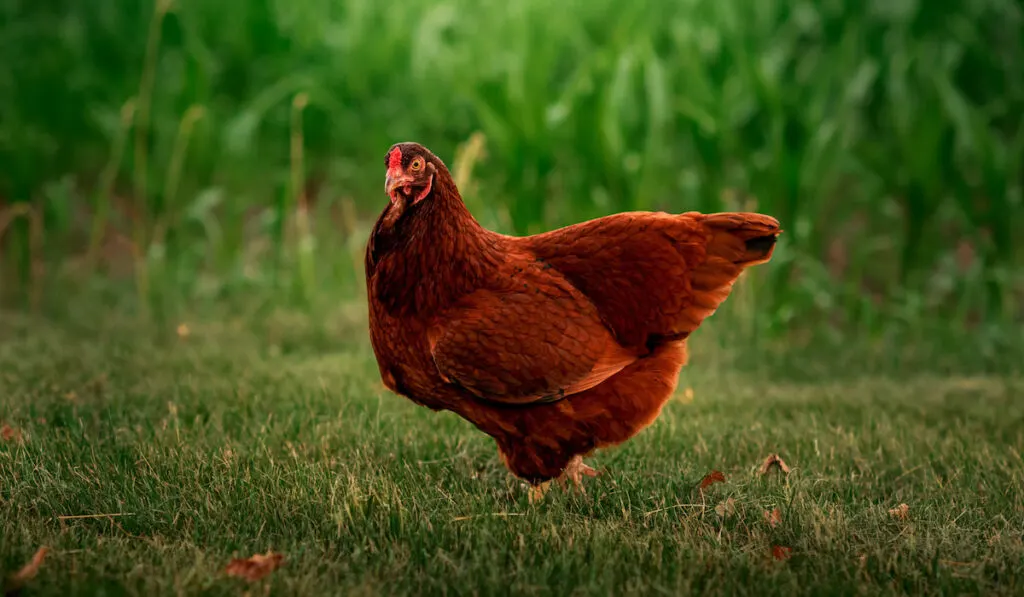
This breed was created in the Buckeye state (Ohio), hence the name.
It is revered for being the only US chicken breed developed by a woman. In 1896, Nettie Metcalf crossbred Plymouth Rock with Buff Cochin. This breeding hatched the Buckeye Chicken breed.
Buckeyes are one tough breed in cold temperatures. Having tiny cushion combs makes things easier for them; they are at low risk of frostbite.
Layers of this breed have an average laying rate, producing 150-200 eggs per year. Plus, they lay eggs through winter.
Their eggs are brown and medium to large in size. However, if you do not keep them for the eggs, you can get Buckeye chickens for their meat too.
6. Orpington
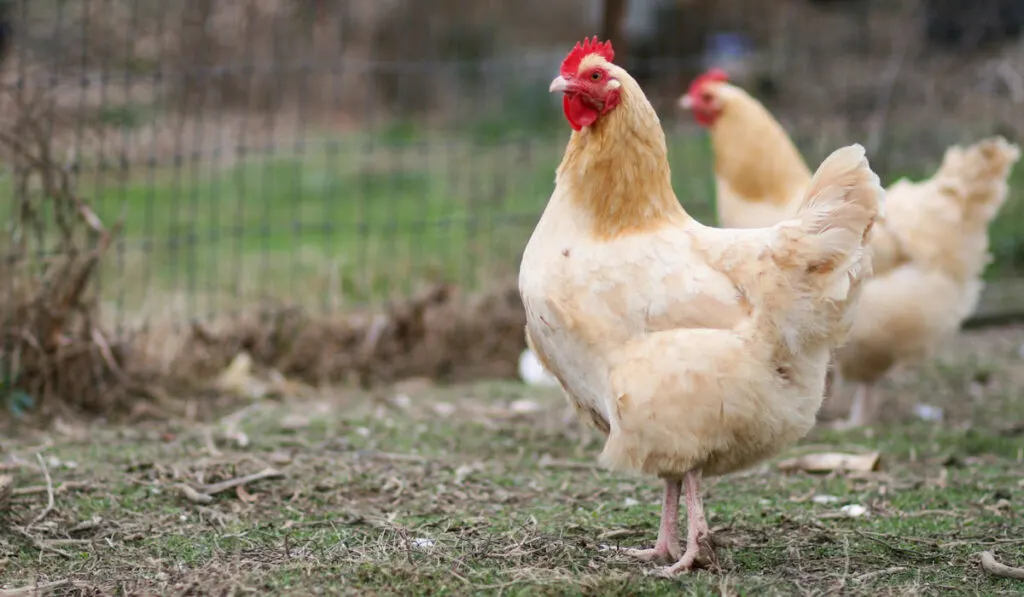
The Buff Orpington might be the most popular variety of this breed. But when it comes to cold-hardiness, you can count on any Orpington variety.
Orpingtons owe their cold-tolerance to their abundant fluffy plumage.
They are at little risk of frostbite because they have small single combs. But even with these features, if their feathers should get wet, they may die from chills.
Hens of the Orpington breed are open to brooding. Besides, they are excellent layers, and you can get around 200-280 eggs from them in a year.
If you want them to lay eggs in winter, provide about 12-14 hours of supplemental lighting per day.
7. Chantecler
Well, being a native of Canada is enough reason for Chanteclers to be very cold-hardy.
But with pea-sized combs, a large body, and small wattles too, only exceedingly cold temperatures can touch Chanteclers.
Chickens of this breed sport dense, fluffy feathers that sit tight to their skin. They are almost the perfect winter chicken.
Chantecler chickens come in white, buff, or partridge. The hens are broody with a decent average laying rate. They can supply you with 150-200 brown eggs in a year, and they lay through winter.
8. Cochin
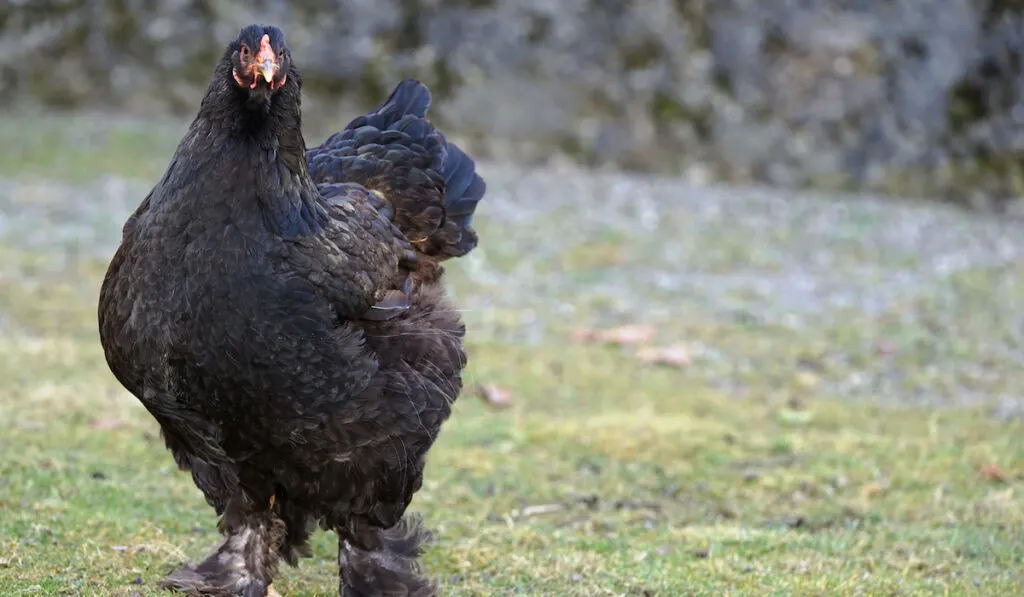
Cochins are a dual-purpose chicken breed that originated in China. They can lay eggs in winter, and on average, they offer 150-160 eggs in a year – the hens are fairly decent layers.
Besides being able to lay eggs in winter, Cochin chickens are cold-hardy themselves. The hardiness of Cochins is linked to their small combs and the feathers on their body and feet.
Cochins come in two varieties: frizzled and non-frizzled. The non-frizzled variety is more tolerant of cold than the other type.
You can get Cochins in several colors, including black, mottled, blue, white, partridge, and silver-laced.
9. Delaware
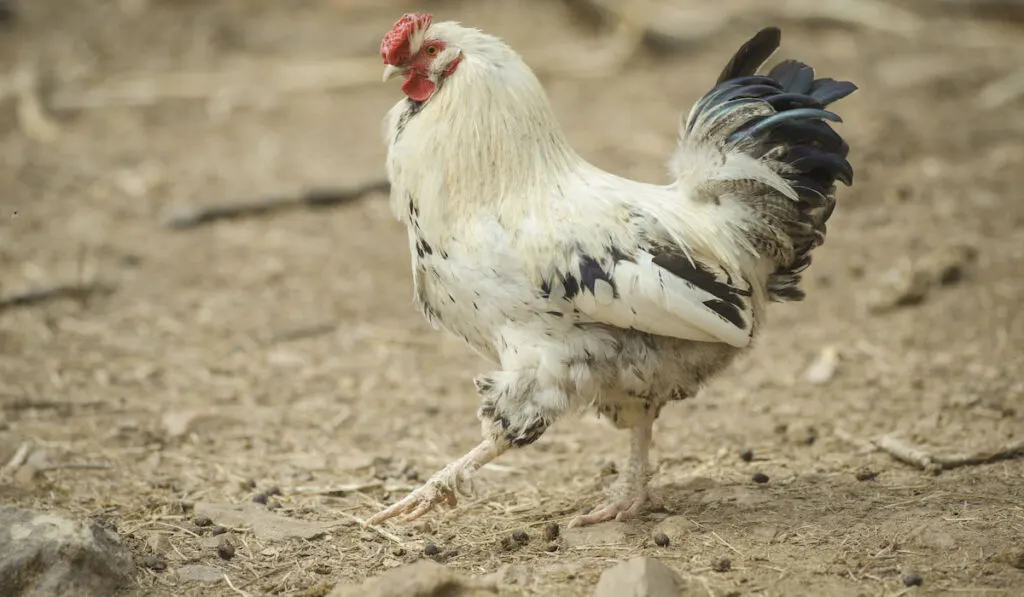
The Delaware breed may not have been around for as long, yet it knows how to chill.
At the start, Delaware chickens were meant to be broilers. But that did not work out. So these days they are mostly layers, and they do it pretty well.
On average, they produce 4 huge brown eggs every week, and in a year, they can produce up to 280. Delaware chickens have dense plumage, which offers them considerable insulation against cold.
Hence, their cold-hardiness. They are curious, gentle, talkative, yet calm. They do not get startled or flighty easily.
10. Dominique
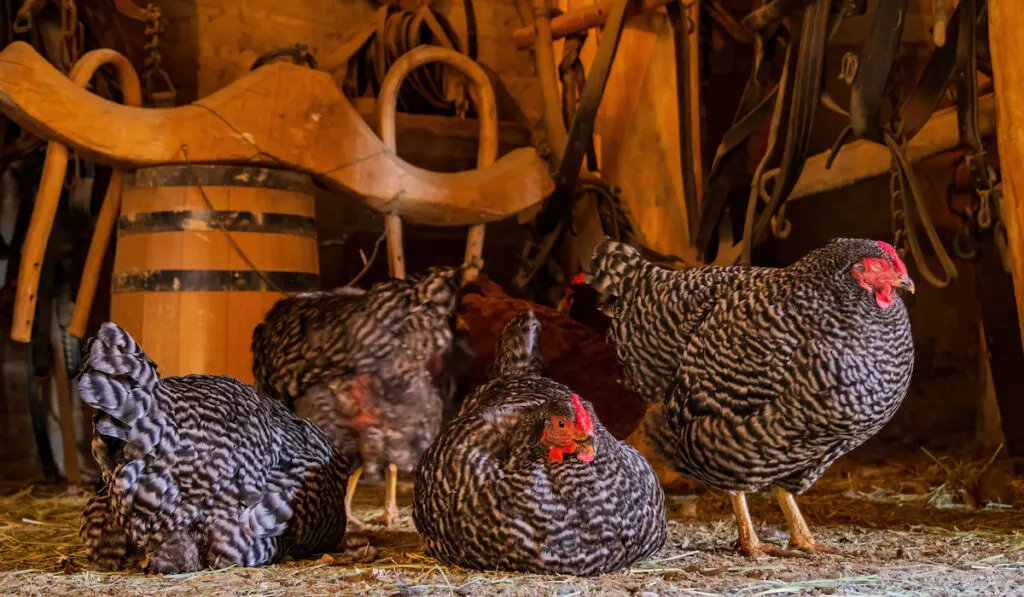
The oldest American breed, the Dominique, was built for cold. For one, it has a small rose comb, so it rarely gets frostbite.
Apart from that, the Pilgrim’s fowl is relatively large with dense plumage, and these offer some insulation against cold. While their comb is safe, the wattles of a Dominique may suffer frostbite.
Dominique hens were revered for being excellent at brooding. But these days, they are just somewhat broody. Dominique hens are decent layers that can give around 150 to 200 light-brown eggs in a year.
11. Easter Egger
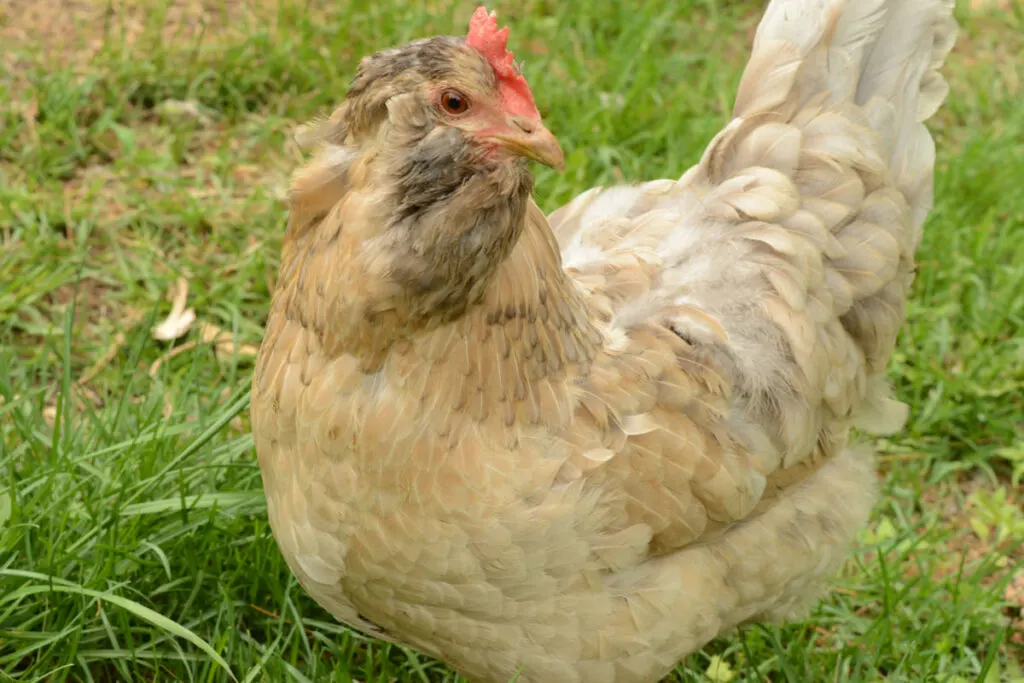
The first thing you may have heard about this chicken is the blue eggs it lays. Easter Eggers were bred from Araucanas or Ameraucanas, hence their ability to lay blue eggs.
Easter Eggers are so named because they lay eggs and grow plumage of various colors. Chickens of this breed come with various types of combs.
But single pea types are the most common. Of course, this type of comb, alongside their small wattles and small earlobes, makes it harder for them to get frostbite.
Easter Eggers are excellent at laying. They deposit an average of 280 eggs per year. Their eggs can be large or extra-large and are usually blue.
12. Faverolle
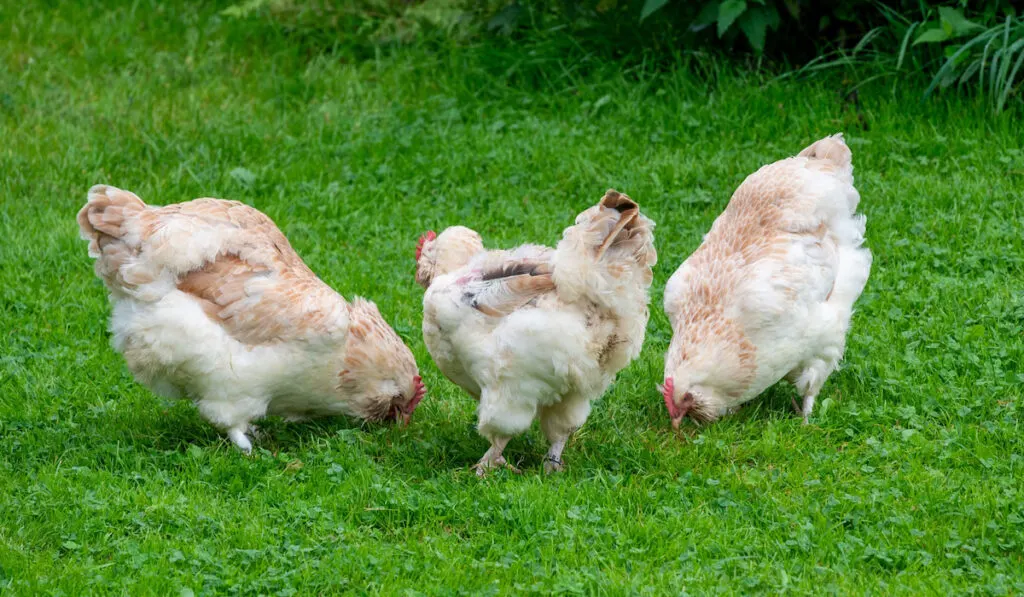
The Faverolles came from France, where they were mainly broilers. But these days, they are dual-purpose, and some people keep them as pets.
Faverolle chickens are generously feathered, with feathers around their body and feet.
This extensive plumage contributes to their resistance to cold. They also have muffs and small combs, which make them even more cold-hardy.
The average Faverolle is a decent layer that can offer 150-180 light-brown eggs per year. Their eggs are medium-sized, and you can get some in winter too.
13. Marans
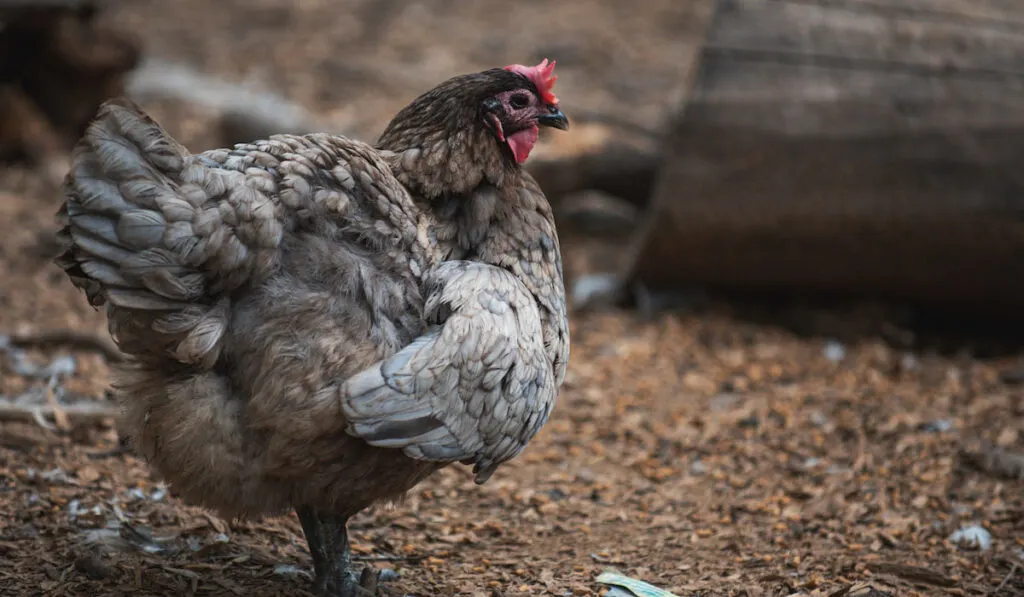
If you know Maran chickens, then you may have heard of their dark-brown eggs. And they produce up to 150-200 of them per year.
While Marans may not really lay eggs in the winter months, they tolerate cold quite well. This breed comes in two varieties: English Marans and French Marans.
French Marans have feathered legs while the English variety does not. As you may expect, the feathers on the legs of the French Marans offer some extra insulation.
Marans are friendly, but some of them can be flighty.
They come in various colors, including black, black copper, brown-red, Colombian, golden cuckoo, silver cuckoo, and white. Of the many varieties, you are more likely to come across a cuckoo or a black copper.
14. New Hampshire Red
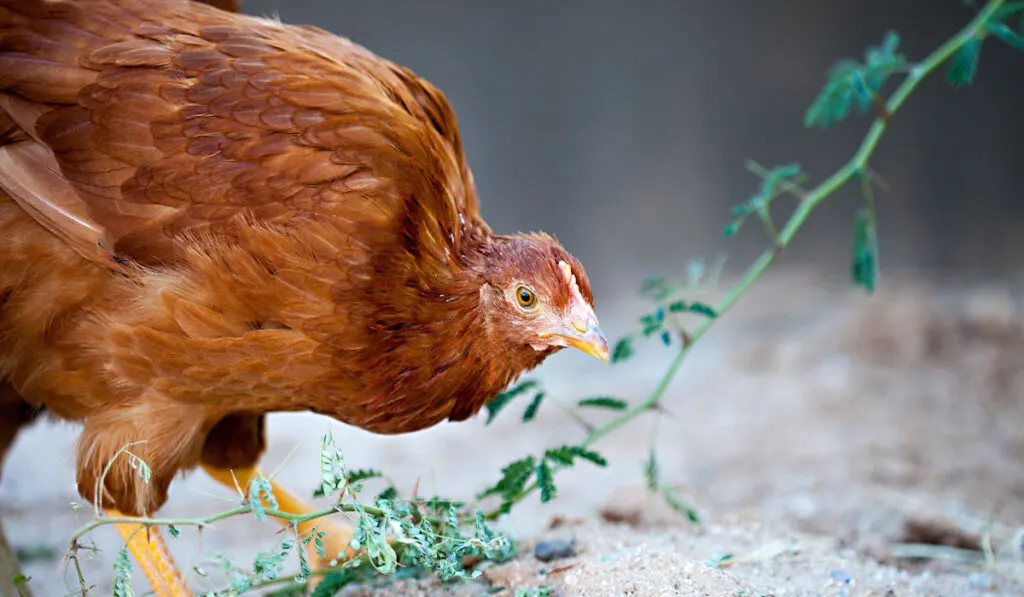
While they might look a lot like the Rhode Island Red, the New Hampshire Reds are bigger. Their large size and dense plumage synergize to offer them insulation against cold.
Besides being cold-hardy, they lay eggs in winter too. New Hampshire Red hens average 3 light-brown eggs per week. This weekly rate can run up to 200 eggs in a year.
15. Plymouth Rock
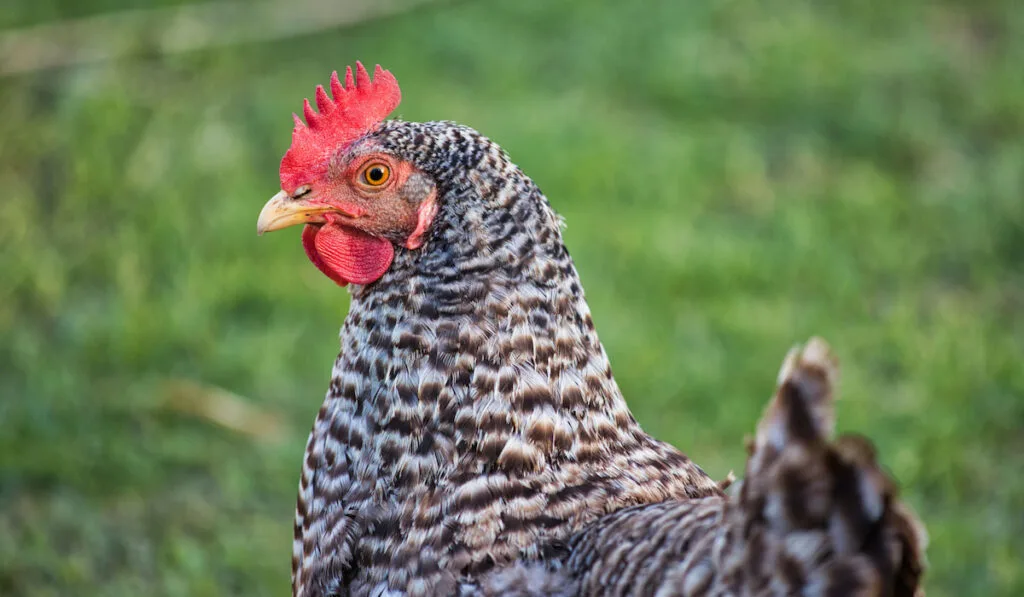
They look like Dominique chickens, but they are not. Barred Plymouth Rocks share similar black-and-white plumage bars with Dominiques. But it turns out the barring in the Plymouths are relatively well-defined.
Beyond the difference in plumage, Dominiques have rose combs, while Plymouth Rocks have 5-point single combs. So, you know which is more likely to get frostbite.
While Plymouth Rocks might be at some risk of frostbite because of their comb, their dense plumage offers insulation against cold. This characteristic drives their cold-hardiness.
Plymouth Rock hens are some of the most excellent layers. They typically average 280 to 300 large light-brown eggs per year. They also lay at a similar rate in winter.
16. Rhode Island Red
The Rhode Island Red is one breed that manages to thrive in various weather conditions. Whether it is hot, cold, wet, or dry, this breed will do well.
The cold-tolerance of Rhode Island Reds is facilitated by their fluffy, tight feathering. But while these chickens are well-insulated, their comb and wattles may suffer frostbite in extreme cold.
Rhode Island Reds are great broilers and layers. They average 3 to 4 large brown eggs per week, and in a year, they can lay up to 240. Their laying may slow in winter. But you can encourage them by offering supplemental lighting.
17. Sussex
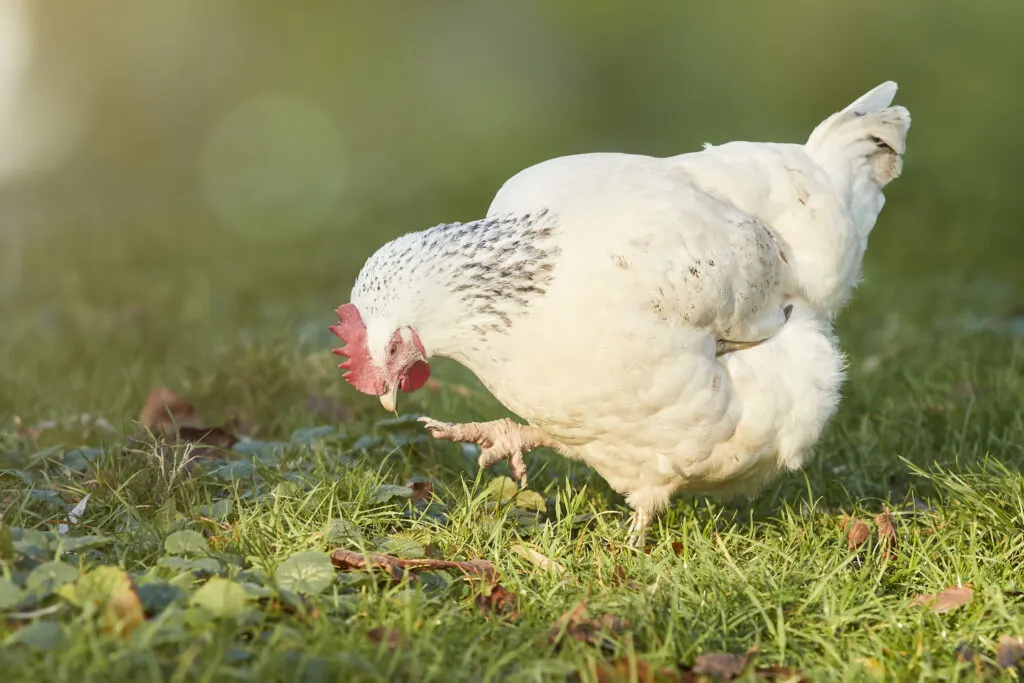
Sussex chickens do well in both winter and summer. Of course, to tolerate summer, they need access to shade and cool water.
The dense feathering of Sussex chickens offers them the ability to fend cold off. But even at that, their combs may be at risk of frostbite in extreme cold.
Sussex chickens are dual-purpose with an excellent laying ability. They have a weekly rate of 4-5 large brown eggs, which can culminate in a total of 250 in a year. Plus, they lay eggs through winter.
Sussex chickens are docile, curious, and easy to care for. They are a low-maintenance breed available in various colors.
Some of these colors include buff, speckled, brown, silver, white, Colombian, and coronation. The speckled variety appears to currently be the most common variety of Sussex chickens.
18. Welsummer
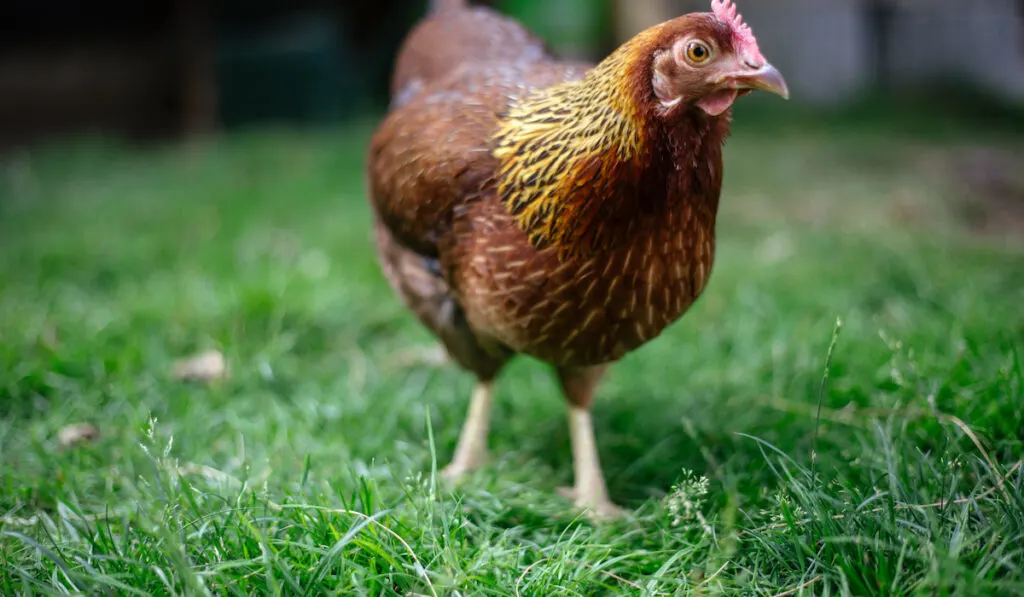
Welsummer chickens originated from Welsum, Netherlands, and they were first imported into the US in the early 20th century.
Welsummers have tiny comb and wattles, meaning they do not get frostbitten readily. They also have well-insulated plumage, which contributes to their overall cold-hardiness.
They are a dual-purpose breed with a fair to decent egg-laying ability.
Some Welsummer hens produce around 160 eggs in a year, while some go as high as 250 in the same period. Their eggs come with a terracotta color patterned with some light speckles.
Welsummer chickens are active, friendly, docile, calm, and intelligent. They are superb foragers. But if you keep them confined, they will adapt.
19. Wyandotte
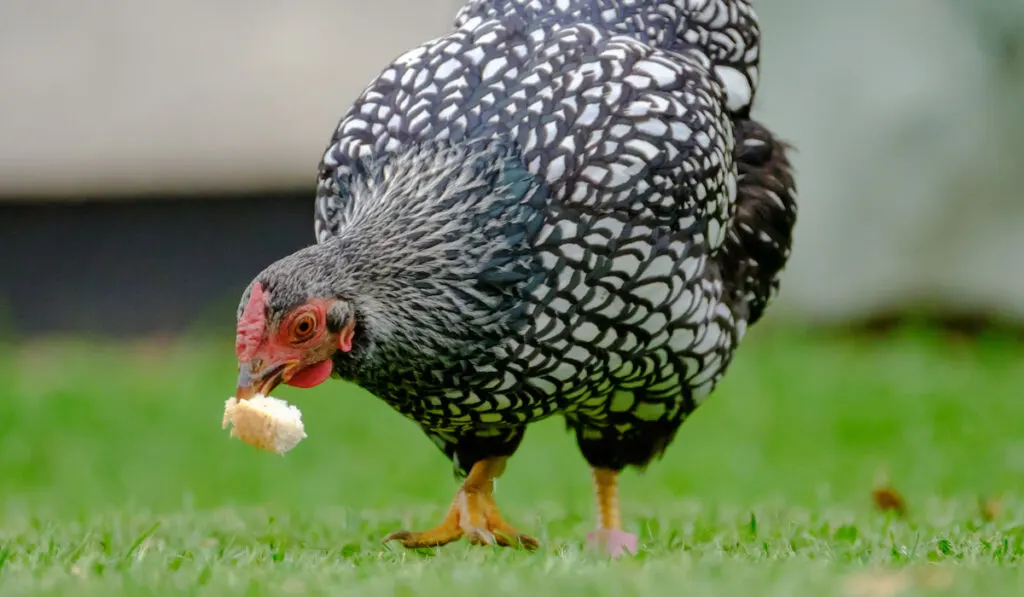
It is pretty hard to ignore the beauty of the plumage of Wyandotte chickens. But when you finally look beyond their beautiful feathers, you will find a cold-hardy, docile, and calm bird.
Wyandottes have dense plumage and rose combs. These two features combine to offer insulation with little risk of frostbite.
The dual-purpose Wyandottes are decent layers. They average 4 large to extra-large brown eggs per week, with a yearly average of 200.
Winter does not stop Wyandotte hens, for even in winter months, they lay eggs with ease. If you need a breed that would lay eggs for you in winter, this is perhaps the strongest candidate.
Wyandotte chickens thrive in confinement and when allowed to forage. While they are friendly to children, they do not fancy being picked up.
Resources
- https://www.fresheggsdaily.blog/2014/12/20-cold-hardy-chicken-breeds.html
- https://www.thehappychickencoop.com/ameraucana
- https://www.knowyourchickens.com/cold-hardy-chickens/
- https://thefrugalchicken.com/ameraucana-chickens/
- https://www.thefeatherbrain.com/blog/australorp-chickens
- https://www.thefeatherbrain.com/blog/barnevelder-chickens
- https://www.chickensandmore.com/brahma-chicken/
- https://www.wideopenpets.com/buckeye-chickens/
- https://www.thehappychickencoop.com/buckeye-chicken
- https://www.thespruce.com/chicken-breeds-orpington-or-buff-orpington-3016551
- https://thefrugalchicken.com/buff-orpington-chickens/#Do_Buff_Orpingtons_Lay_In_The_Winter
- https://insteading.com/chickens/breeds/chantecler/
- https://timbercreekfarmer.com/raising-a-large-breed-chicken/
- https://www.thehappychickencoop.com/easter-egger/
- https://livestockconservancy.org/index.php/heritage/internal/faverolle
- https://www.freedomrangerhatchery.com/blue-plymouth-rock.asp
- https://www.lrrd.org/lrrd4/3/bangla1.htm
- https://www.knowyourchickens.com/rhode-island-red-chicken/
- https://www.thehappychickencoop.com/welsummer-chicken/
- https://www.thefeatherbrain.com/blog/marans-chickens
- https://homesteadandchill.com/backyard-chickens-top-18-breeds
- https://www.thefeatherbrain.com/blog/marans-chickens
- https://www.thehappychickencoop.com/10-breeds-of-chicken-that-will-lay-lots-of-eggs-for-you/
- https://www.thehappychickencoop.com/speckled-sussex/
- https://www.thehappychickencoop.com/sussex-chicken/
